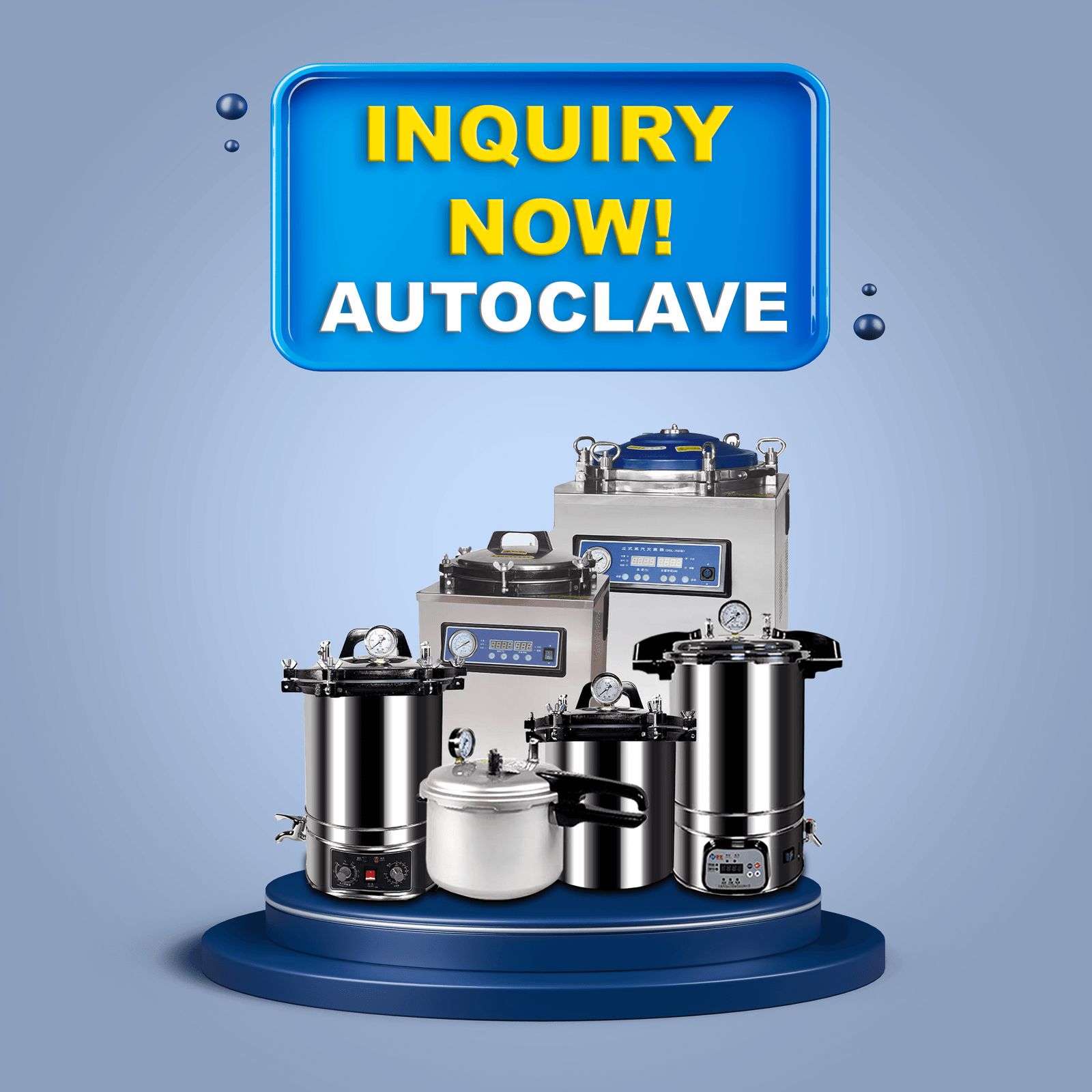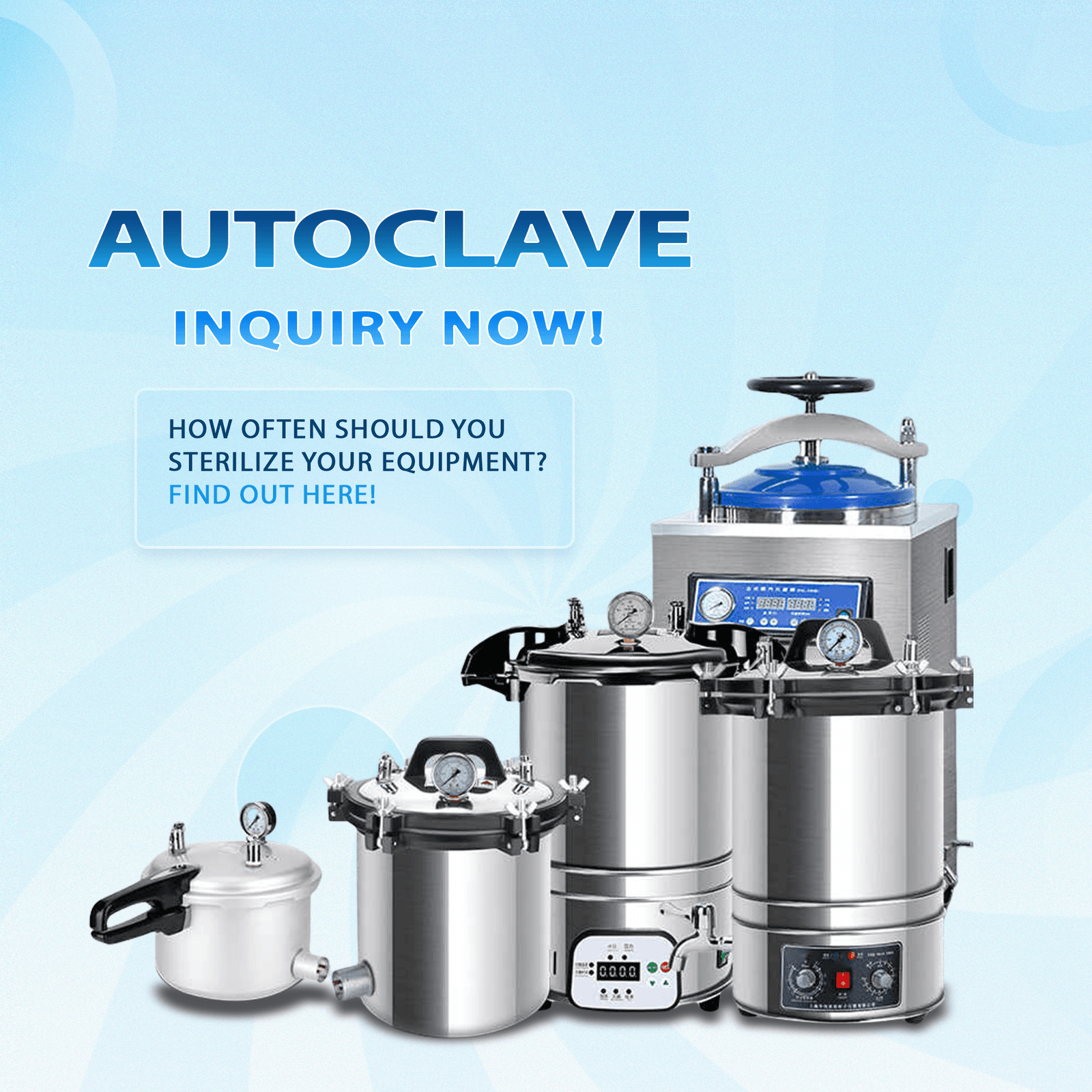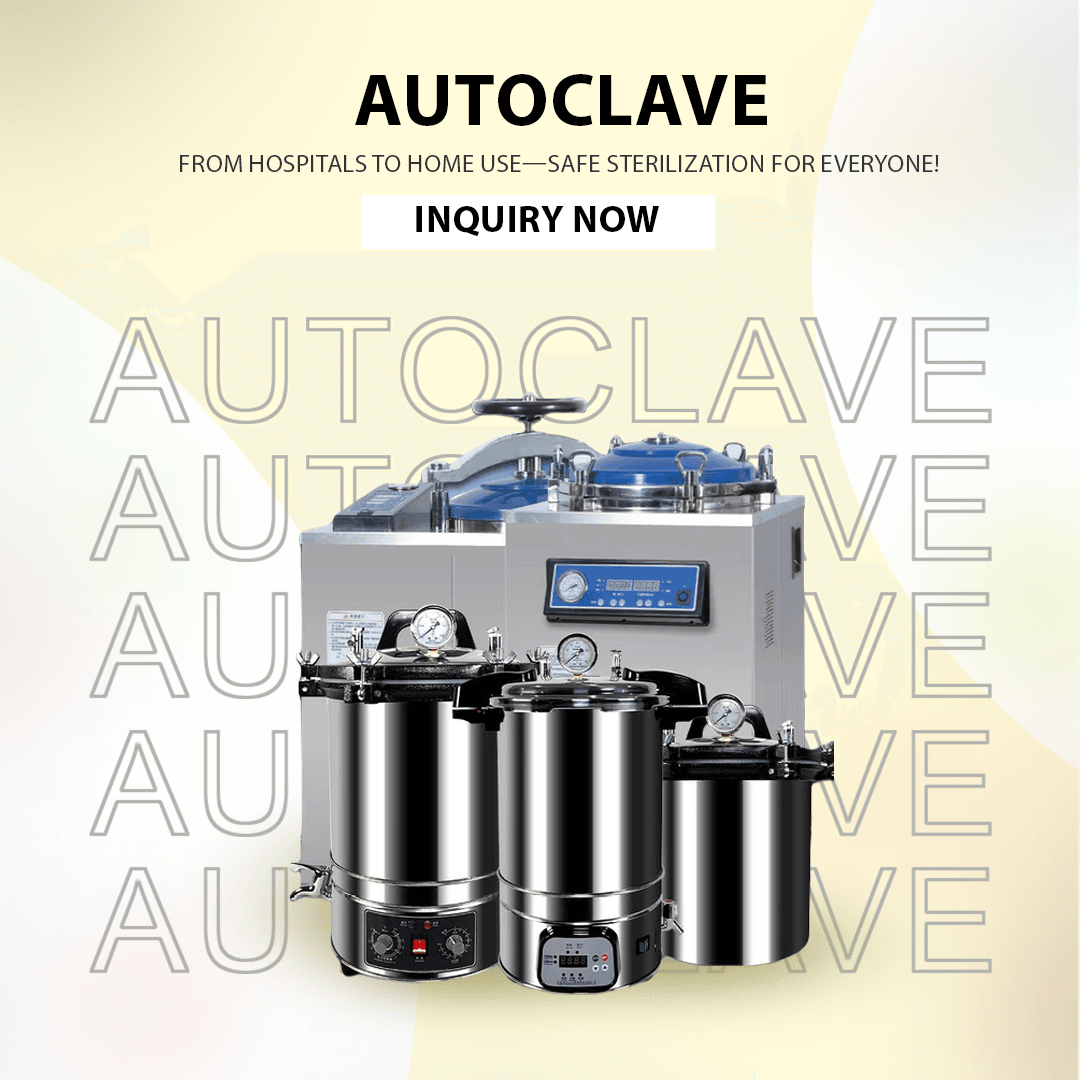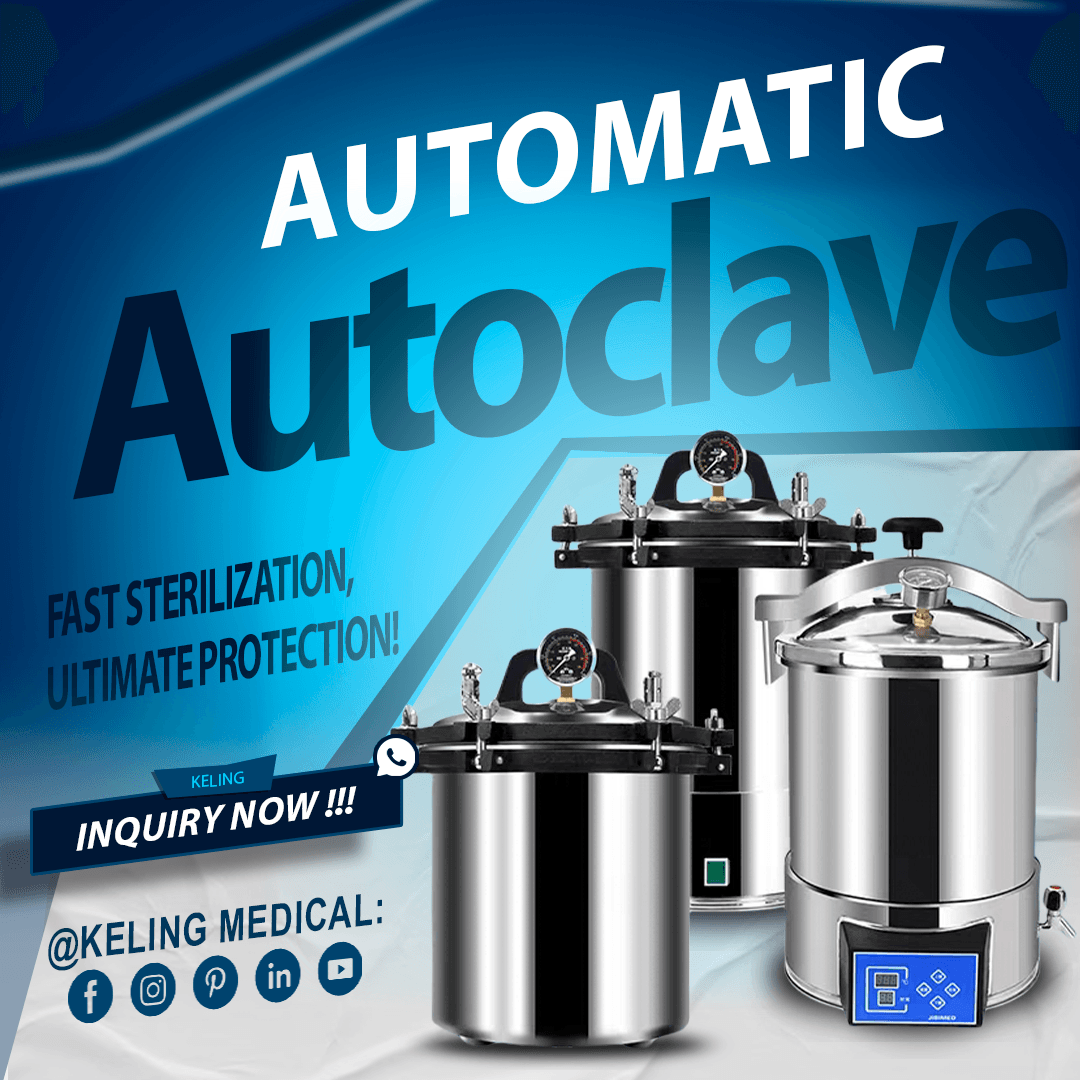
Professionals involved in medical equipment supply chains will discover this comprehensive guide which helps them develop a deeper understanding of autoclaves and their working principles. This article delivers a comprehensive exploration of autoclave functionality alongside key components and their importance across different environments for professionals sourcing sterilization solutions and those educating clients about infection control equipment. You will discover valuable insights through the 2000-word detailed content to improve your products and deliver superior services to healthcare providers.
The autoclave operates as a specialized machine which sterilizes equipment and materials by effectively eliminating harmful microorganisms including bacteria, viruses, fungi, and spores. This sterilization system functions through the application of high-pressure saturated steam at increased temperatures. The sterilization method uses temperature levels ranging from 121°C to 134°C along with pressure settings that enable steam to reach every area of the materials undergoing treatment. The sterilization method eliminates even the toughest pathogens thus rendering items safe for use in medical treatment facilities as well as laboratory and critical settings.
Medical equipment distributors and dealers need to understand autoclave functionality to effectively market these devices as essential components of their product lines. Autoclaves serve as essential components in healthcare settings to maintain infection control standards while ensuring compliance with regulations and safe operational procedures. Mastering autoclave mechanics enables you to handle client questions with confidence while recommending suitable models and establishing your reputation as an expert supplier in the competitive market.
The autoclave’s sterilization procedure starts with inserting the sterilization items into its chamber. Sterilization preparations involve loading items such as surgical instruments, laboratory glassware, medical supplies, and other materials that withstand high temperatures. Proper arrangement of items in the chamber is essential for steam to reach every surface during sterilization. The sterilization process requires proper loading of the autoclave chamber because overloading or incorrect placement can obstruct the procedure hence following loading guidelines ensures optimal sterilization results.
The autoclave door securely closes and seals once the items are loaded to establish an airtight environment. The sterilization process demands high pressure and temperature which this seal maintains. To enhance safety during operation modern autoclaves use automated locking systems which prevent accidental openings and protect both users and the sterilization process.
The sterilization process requires the removal of air from the chamber first because its presence can obstruct steam from reaching surfaces properly. The air removal process from the chamber typically utilizes vacuuming or gravity displacement which involves steam driving the air through vents. The direct contact between steam and items becomes possible when air is removed which optimizes sterilization efficiency.
The autoclave generates steam by heating water after its internal air has been evacuated. The steam enters a pressurization system where it reaches temperatures that range from 121°C to 134°C based on the cycle settings used. Microorganisms cannot survive the combination of high temperature and pressure which destroys them by denaturing their proteins and damaging their cell structures. The autoclave operation hinges on this step which destroys even the toughest spores.
After the autoclave achieves the target temperature and pressure it sustains these conditions during a predetermined holding time. The duration of the holding time depends on both the load type and sterilization needs although it generally extends between 3 to 30 minutes. The holding time duration guarantees full exposure of all microorganisms to lethal sterilization conditions until they are fully eradicated.
Once the holding time ends the autoclave initiates its cooling phase while slowly releasing the chamber pressure. Certain sterilization models employ a drying step to eliminate leftover moisture from materials which helps prevent microorganism growth after the sterilization process. The cooling and drying process guarantees that the items become safe to handle and prepared for immediate application or storage.
The autoclave door opens for item removal after the cycle ends and the chamber reaches a safe temperature. Handling the sterilized items requires extreme care to prevent recontamination while sterile gloves or tools are used by the personnel. The sterilized items stand prepared for medical procedures and laboratory experiments as well as other applications demanding total sterility.
Items that need sterilization are placed in the chamber which serves as the core section of an autoclave. The autoclave chamber sustains high pressure and temperature conditions while commonly utilizing stainless steel materials for corrosion protection against steam exposure. The chamber size differs between models to accommodate various sterilization capacities and the requirements of different facilities.
The heating element boils water to produce steam which is essential for the operation. The heating element of an autoclave usually takes the form of an electric heater positioned at the base or contained within an independent reservoir. The heating element’s performance affects how fast the autoclave heats to the necessary temperature which then determines the total cycle time.
Autoclaves utilize sensors to track both pressure and temperature during the sterilization cycle. Sensors maintain sterilization conditions within required parameters for successful operation. The system activates alerts and modifies settings whenever deviations happen to ensure safety and effectiveness.
The control panel enables users to establish and track sterilization conditions including temperature settings, pressure levels, and the duration of the cycle. Operators can choose pre-configured cycles suited to different loads through programmable settings and digital displays on modern autoclaves for easier operation.
Autoclave design must prioritize safety through safety valves that activate to release pressure beyond safe thresholds. The door locks on autoclaves block access to the interior while it operates to protect users from burn risks and high-pressure steam exposure.
The majority of autoclaves feature a water storage reservoir which turns into steam during operation. Manual filling is required for some models while other autoclaves feature automatic refilling through water supply connections. Water purity directly impacts both the effectiveness and lifespan of the equipment.
This model utilizes steam’s lighter weight to push air down and out of the chamber by means of vents. This autoclave type serves smaller facilities effectively because it sterilizes solid non-porous items through an uncomplicated and economical process.
A pump draws air out of the chamber in vacuum autoclaves before steam introduction to achieve improved penetration of porous materials such as fabrics or wrapped instruments. Larger healthcare facilities with multiple sterilization requirements regularly use this type because it handles complex loads effectively.
This sophisticated autoclave model employs alternating steam flushes with pressure pulses to eliminate air and achieve top-notch sterilization for difficult loads. This method stands out for its high efficiency and finds widespread application in environments that demand quick processing and high output like large hospital settings.
Benchtop autoclaves are designed to occupy small spaces while offering compact features suitable for facilities with lower sterilization demands. Smaller models still deliver effective sterilization for reduced loads because they follow the same operating principles as larger autoclave systems.
Whether the autoclave chamber stands vertically or lays horizontally determines the loading method and space requirements. Vertical autoclave models maximize space efficiency in small facilities while horizontal autoclave models handle bigger loads which makes them perfect for environments with high-volume needs.
The performance of sterilization depends on both the nature of items inside the autoclave chamber and their spatial configuration. Autoclaves that sterilize porous substances or tightly packed items may need extended cycle durations or specialized machines to achieve proper steam flow. Distributors need to train clients about correct loading methods to improve sterilization effectiveness.
The performance of sterilization procedures and the longevity of autoclave equipment depend on the quality of water used. Mineral deposits from hard water or contaminants result in decreased machine efficiency and accelerated equipment degradation. To achieve optimal operation of autoclaves distilled or deionized water should be used.
The selected temperature, pressure and time settings need to meet the specific sterilization requirements of the load. Improper settings during sterilization processes may produce suboptimal results or cause harm to delicate materials. Providing guidance on cycle selection enables distributors to deliver client satisfaction.
To achieve consistent performance equipment requires routine maintenance activities including chamber cleaning and seal inspection and sensor calibration. Avoiding maintenance procedures creates risks of operational inefficiencies and equipment failures which demonstrates why distributors must deliver detailed maintenance timelines and assistance services.
Facility conditions including temperature and humidity levels directly affect how autoclaves perform. Autoclave heating times get extended when operating in extremely cold environments. Distributors need to evaluate these regional and situational factors when selecting models for specific applications.
Autoclaves destroy numerous microorganisms and tough spores to achieve full sterilization. The dependability of autoclaves serves as a primary attraction for distributors because their customers seek equipment that ensures patient safety.
The upfront expense of purchasing an autoclave is high but the reuse of instruments and supplies delivers substantial savings over time when compared to disposable options. Facilities with limited budgets find autoclaves financially advantageous which makes them a worthwhile purchase.
Autoclaves come in different sizes and designs which serve both medical facilities like small clinics and large hospitals as well as non-medical environments. Their adaptability turns autoclaves into flexible assets for distributors’ product lists which expands their possible customer pool.
Healthcare facilities need to follow rigorous sterilization standards. Autoclaves deliver dependable sterilization solutions that help clients successfully navigate audits and inspections with assurance.
Autoclaves maintain workplace safety by sterilizing tools and waste to eliminate dangerous pathogens for healthcare workers. The emphasis on safety through autoclave use attracts clients who want to ensure employee well-being.
Smaller facilities often struggle to purchase autoclaves because of the high initial investment required. By providing financing solutions or highlighting the cost benefits of reusable items distributors help clients overcome the barrier of autoclave upfront costs.
The substantial space requirements of bigger autoclave models create challenges for facilities that operate in smaller areas. To address space constraints facilities should utilize smaller or vertical autoclave models which provides solutions to all clients.
Periodic servicing of autoclaves can result in operational downtime. Distributors need to offer strong support services as this will help prevent operational disruptions and uphold client confidence.
The high temperatures and pressures within autoclaves may damage materials that cannot endure these conditions. Distributors need to train clients about materials that work well with their systems to avoid misuse and achieve successful sterilization.
The rules governing sterilization procedures vary between different regions and distributors must remain updated on the local standards in each area. Distributors who assist clients in choosing compliant equipment can prevent regulatory problems.
Healthcare infrastructure investments and tighter infection control rules lead to growing demand for sterilization equipment such as autoclaves. Distributors have a substantial chance to grow their market share through this development.
When distributors provide dependable autoclave solutions they become trusted partners for healthcare providers. Consistent quality and support from distributors generates customer loyalty which leads to ongoing business transactions.
By adding autoclaves to your product range distributors can reach diverse customers including both small practices and large institutions. Diversification leads to more robust revenue generation and increased market competitiveness.
Distributors ensure that essential infection prevention tools reach their end users. Your promotion of autoclaves leads to enhanced patient safety and superior public health results.
Understanding how an autoclave works is essential for medical equipment distributors, dealers, and procurement specialists aiming to provide critical sterilization solutions to healthcare providers. By leveraging high-pressure steam to eliminate pathogens, autoclaves ensure safety and hygiene across various settings. Incorporating these devices into your portfolio allows you to meet client needs effectively while growing your business in a competitive landscape.
If you’re ready to explore high-quality autoclave solutions or have questions about their functionality for your clients, we’re here to help. Reach out via email, συνδεθείτε στο WhatsApp, ή επισκεφθείτε το δικτυακός τόπος for detailed information. Our team is eager to assist you in finding the ideal sterilization equipment to meet your market’s needs.
1. How does an autoclave achieve sterilization? It uses high-pressure steam at elevated temperatures to destroy microorganisms, ensuring items are safe for reuse.
2. What are the main steps in an autoclave’s operation? The process includes loading items, sealing the chamber, removing air, introducing steam, maintaining conditions, cooling, and unloading.
3. Why is steam used in autoclaves for sterilization? Steam under pressure penetrates surfaces effectively, reaching high temperatures that kill even resistant pathogens.
4. Can all materials be sterilized in an autoclave? No, only heat and pressure-resistant materials can be sterilized; sensitive items may require alternative methods.
5. How do autoclaves benefit healthcare facilities? They provide reliable sterilization, support cost-effective reuse of instruments, and ensure compliance with hygiene standards.
6. Why should distributors prioritize autoclaves in their offerings? Autoclaves are in high demand for infection control, offering distributors a valuable opportunity to meet diverse client needs.

Τα περιβάλλοντα υγειονομικής περίθαλψης και τα εργαστήρια πρέπει να θέτουν ως προτεραιότητα την πλήρη απομάκρυνση των επικίνδυνων μικροοργανισμών από όλο τον εξοπλισμό και τα υλικά ως ένα κρίσιμο βήμα για την προστασία της ασφάλειας των ασθενών και τον έλεγχο των λοιμώξεων. Αποστείρωση με αυτόκαυστο

Ο κλάδος της υγειονομικής περίθαλψης λειτουργεί βάσει αυστηρών κανονισμών και απαιτεί την αποστειρότητα των ιατρικών οργάνων για την προστασία των ασθενών από λοιμώξεις και τη διατήρηση των προτύπων ασφαλείας. Ένας ισχυρός αποστειρωτής αυτόκλειστου κλίβανο αποτελεί το βασικό συστατικό του

Τα αυτόκλειστα είναι απαραίτητα στην υγειονομική περίθαλψη, επειδή αποστειρώνουν ιατρικά όργανα και υλικά, γεγονός που συμβάλλει στον έλεγχο των λοιμώξεων. Η τακτική συντήρηση μαζί με τον κατάλληλο καθαρισμό καθορίζει αν αυτές οι συσκευές θα λειτουργούν αποτελεσματικά. Ιατρικό

Τα αυτόκλειστα είναι απαραίτητος εξοπλισμός στην υγειονομική περίθαλψη και τον έλεγχο των λοιμώξεων για τη διατήρηση αποστειρωμένων συνθηκών των ιατρικών οργάνων και του εργαστηριακού εξοπλισμού μαζί με άλλα ζωτικά υλικά. Προμηθευτές ιατρικού εξοπλισμού και εμπειρογνώμονες προμηθειών

Οι πάροχοι υγειονομικής περίθαλψης πρέπει να δίνουν προτεραιότητα στη στειρότητα των οργάνων και των υλικών για την αποτελεσματική πρόληψη των λοιμώξεων και την προστασία της υγείας των ασθενών. Η αποστείρωση σε αυτόκαυστο αποδεικνύεται μια εξαιρετικά αξιόπιστη μέθοδος που βρίσκει εκτεταμένη χρήση σε όλες τις

Ο κλάδος της υγειονομικής περίθαλψης απαιτεί αυστηρά μέτρα ελέγχου των λοιμώξεων και, ως εκ τούτου, ορισμένοι όροι και εργαλεία είναι ζωτικής σημασίας για τη διασφάλιση της ασφάλειας και της υγιεινής. Στις ιατρικές και εργαστηριακές ρυθμίσεις που απαιτούν αποστειρωμένες συνθήκες